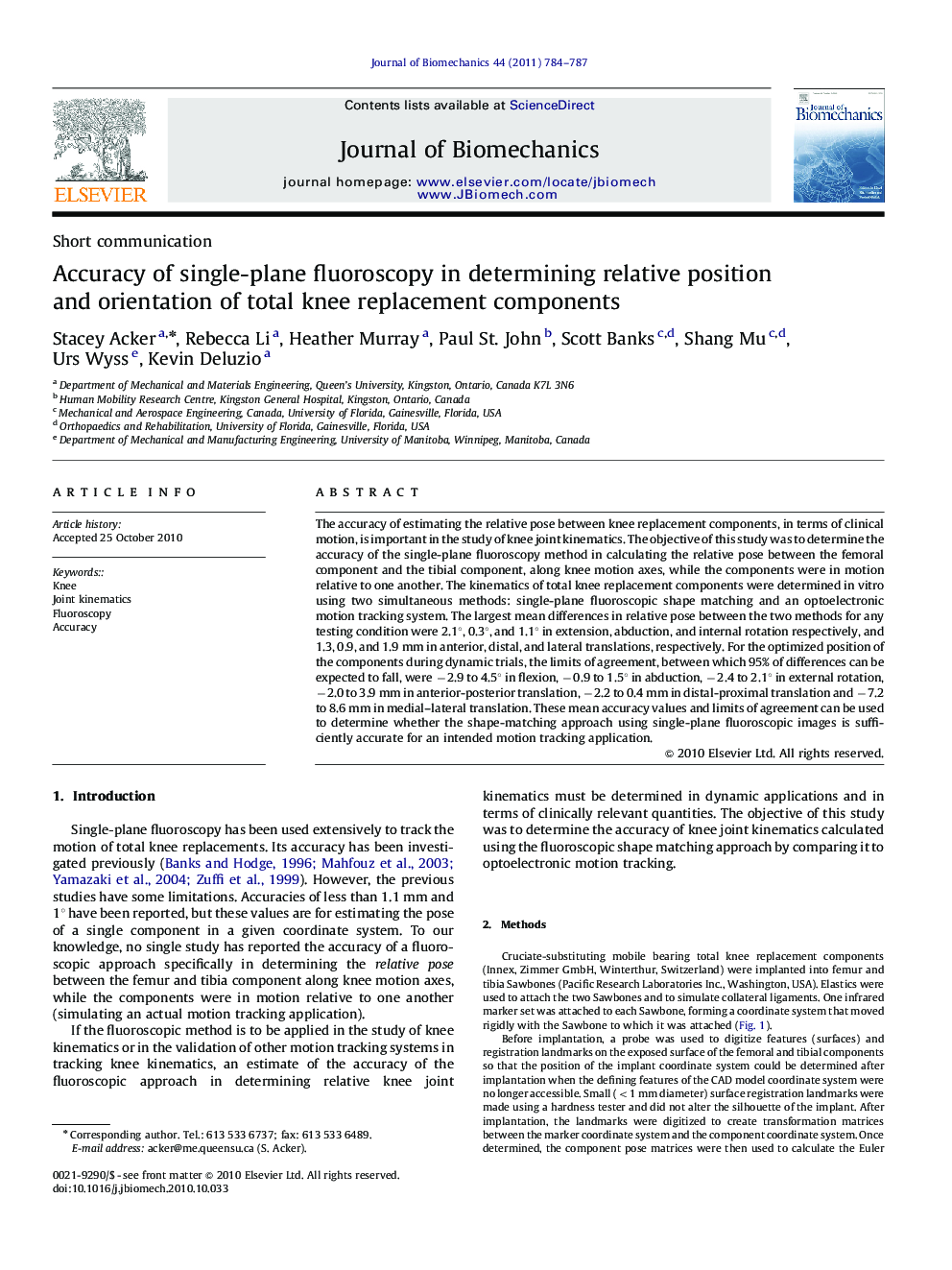| Article ID | Journal | Published Year | Pages | File Type |
|---|---|---|---|---|
| 10433301 | Journal of Biomechanics | 2011 | 4 Pages |
Abstract
The accuracy of estimating the relative pose between knee replacement components, in terms of clinical motion, is important in the study of knee joint kinematics. The objective of this study was to determine the accuracy of the single-plane fluoroscopy method in calculating the relative pose between the femoral component and the tibial component, along knee motion axes, while the components were in motion relative to one another. The kinematics of total knee replacement components were determined in vitro using two simultaneous methods: single-plane fluoroscopic shape matching and an optoelectronic motion tracking system. The largest mean differences in relative pose between the two methods for any testing condition were 2.1°, 0.3°, and 1.1° in extension, abduction, and internal rotation respectively, and 1.3, 0.9, and 1.9 mm in anterior, distal, and lateral translations, respectively. For the optimized position of the components during dynamic trials, the limits of agreement, between which 95% of differences can be expected to fall, were â2.9 to 4.5° in flexion, â0.9 to 1.5° in abduction, â2.4 to 2.1° in external rotation, â2.0 to 3.9 mm in anterior-posterior translation, â2.2 to 0.4 mm in distal-proximal translation and â7.2 to 8.6 mm in medial-lateral translation. These mean accuracy values and limits of agreement can be used to determine whether the shape-matching approach using single-plane fluoroscopic images is sufficiently accurate for an intended motion tracking application.
Related Topics
Physical Sciences and Engineering
Engineering
Biomedical Engineering
Authors
Stacey Acker, Rebecca Li, Heather Murray, Paul St. John, Scott Banks, Shang Mu, Urs Wyss, Kevin Deluzio,
